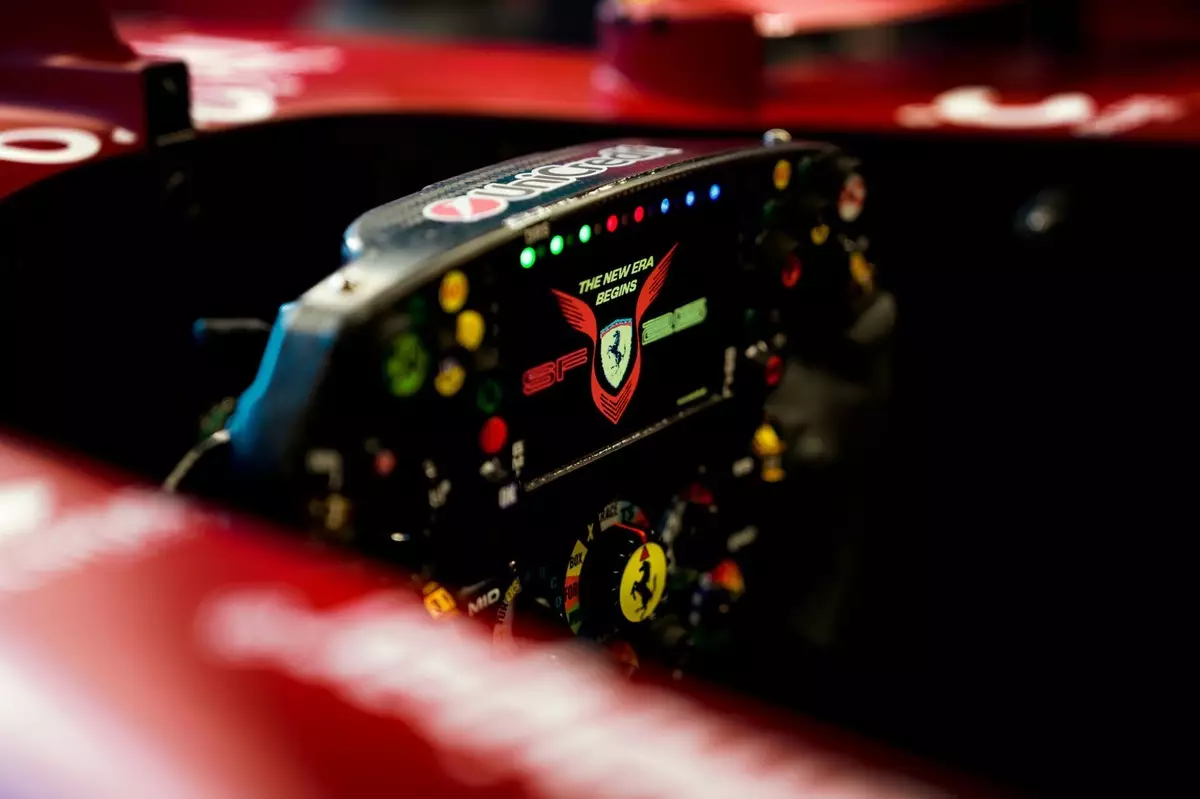Lewis Hamilton’s transition to Ferrari has begun with a slew of positive developments, despite not executing a flawless race weekend in Australia and China. The British driver secured his inaugural sprint pole and victory in Shanghai—an encouraging sign indicating that he is finding his footing within the Italian racing team. Having spent over a dozen years with Mercedes, Hamilton has developed a unique muscle memory and driving style aligned with the Silver Arrows’ engineering approach. The differences between the Mercedes and Ferrari philosophies are particularly pronounced, and as Hamilton strives to maximize his performance in the SF-25, the focus on personalized adjustments is critical.
At the core of Hamilton’s driving success is the comfort and familiarity of his vehicle—something he has emphasized while adjusting to the Ferrari setup. As the lines between winning and losing in F1 are razor-thin, every modicum of detail plays a pivotal role. Therefore, Ferrari’s willingness to adapt the SF-25 to Hamilton’s preferences is both strategic and necessary.
Smart Engineering: Adapting the Steering Wheel
One of the most notable changes Ferrari has made for Hamilton is the customization of his steering wheel layout. In a move that not only showcases attention to detail but also highlights a commitment to optimizing Hamilton’s performance, Ferrari has endeavored to align the steering wheel design with what Hamilton has become accustomed to at Mercedes. Beyond aesthetic tweaks, these changes reflect an intelligent engineering strategy that embraces personalization at its core.
From adjusting the clutch and gear lever design to refining ergonomic configurations, Ferrari implements a personalized approach to Hamilton’s interaction with the vehicle. This hands-on attention includes the reprogramming of data displays tailored specifically for Hamilton’s preferences, which diverge significantly from those of his teammate, Charles Leclerc. The fact that Hamilton is receiving additional data not typically visible to Leclerc indicates Ferrari’s responsiveness to his requests, a deliberate effort to create an environment where Hamilton feels empowered and in control.
Enhanced Data Display: A Game Changer for Performance
Hamilton’s steering wheel now features a multitude of data metrics designed to elevate his driving experience and performance. Unlike the standard figures displayed for all drivers, Hamilton’s interface showcases crucial engine management information, including the state of charge (SOC) of his battery pack and detailed engine mappings. The enhanced data availability is critical for Hamilton, as it closely mirrors the configurations he relied upon during his tenure with Mercedes.
While other drivers may find value in a streamlined setup, Hamilton’s preference for comprehensive data enhances his strategic decision-making on the track. Having the flexibility to monitor secondary settings and the various configurations of his power units could potentially lead to faster lap times and greater adaptability mid-race. In F1, where micro-decisions can lead to wins or losses, this additional information equips Hamilton with the context needed to make swift, informed choices during competitive situations.
The Benefits of Personalization: A Competitive Edge
Each adjustment to the SF-25 represents not just a customization, but a concerted effort by Ferrari to ensure that their investment in Hamilton is maximized. These adaptations support Hamilton’s acclimatization to his new environment in the same way that bespoke tailoring fits an individual perfectly. When a driver feels comfortable and supported by their equipment, they can channel their full potential onto the racetrack.
The strategic foresight of individualized vehicle setups will serve the team well, especially in a season where results are paramount. For Ferrari, this collaboration reflects their understanding that the balance between driver confidence and technical prowess must be finely tuned. Adapting their engineering philosophy to support Hamilton should allow both him and the team to reap the rewards of their efforts.
Shaping a Winning Culture: The Future of Ferrari and Hamilton
What stands out most about Hamilton’s integration into Ferrari is the collaborative approach both the driver and team are taking to shape a winning culture. It’s not merely about employing technological sophistication; it’s about marrying that with an understanding of human performance. The changes made to Hamilton’s vehicle underscore a larger narrative—that modern F1 is as much about the driver-engineer synergy as it is about engineering excellence.
As races continue and Hamilton becomes more accustomed to the SF-25, it’s likely that these personalized tweaks will yield tangible improvements in performance on the track. If Ferrari’s dedication to customizing the vehicle fosters a faster acclimatization for Hamilton, their proactive stance will undoubtedly pay dividends in their competitive endeavors against rival teams. In an era defined by marginal gains, Ferrari’s ongoing partnership with Hamilton appears set to elevate them to new heights in the relentless pursuit of excellence in Formula 1.


Leave a Reply